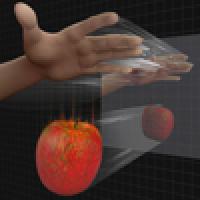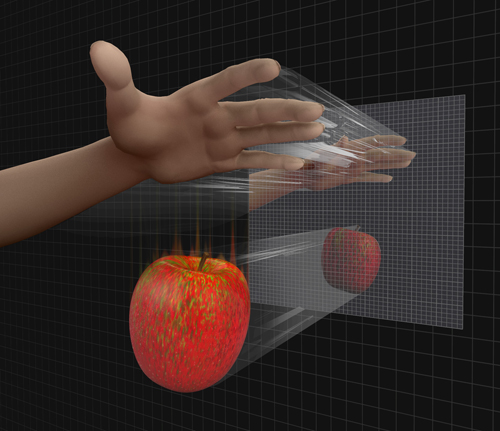
Is it many worlds?
Let's recap the mystery we're trying to get to grips with. The mathematics of quantum mechanics, a hugely successful theory, appears to suggest that physical systems can simultaneously be in several states we would normally deem mutually exclusive: particles can be in several places at once, or they can travel at several speeds at once, for example. We never observe such superposition in real life. Why? Is it the act of observation that causes reality to snap to one of the possible outcomes? Is the theory incomplete? Or do those alternative realities exist alongside of each other, without us noticing?

Could there be many parallel worlds?
The latter idea is behind the many-world interpretation of quantum mechanics and was first proposed by the physicist Hugh Everett in his PhD thesis published in 1957. It might seem crazy, but it is rooted in the maths that underlies quantum mechanics. The equations of quantum mechanics don't indicate that something special should happen at the point of measurement, so why not take them literally? "What the mathematics then tells us is that if a particle is [in superposition of two states A and B], the person doing the measurement goes into a superposition of seeing the particle in [state A] and seeing it in [state B]," explains David Wallace, a philosopher of physics at the University of Oxford. So microscopic superposition turns into macroscopic superposition.
But while the maths does not decide between A or B, neither does it blend the two beyond recognition. The mathematical expression describing the situation can be split into two parts each describing a world in which the experimenter sees exactly one of the two possibilities. If you take this literally, then you have to admit that reality has split.
But is a physicist making a measurement the only thing that can cause reality to split? The answer is no. A measurement of a system in superposition is an interaction with that system and there are other physical processes that can interact with it too. For example, cosmic rays can be in a superposition of going in lots of different directions at once. If one of these directions is homing in on a crystal on Earth, then the impact of the ray will leave a track on the crystal. The crystal is effectively measuring where the ray is. And since the ray is in superposition of homing in on the crystal and not homing in on it, the crystal goes into superposition of having a track and not having a track. And thus, so goes the Everett interpretation, reality splits.
With the need for an observer eliminated you can imagine the branching game as having gone on since the beginning of time. "[According to the many-worlds view] this has been going on right from the Big Bang," explains Adrian Kent, a theoretical physicist at the University of Cambridge. "The Universe started out perhaps in a simple quantum state, but it very quickly became a superposition of lots of different descriptions of the Universe, lots of configurations of galaxies. In some of these branches the Earth would have formed and in some of them it wouldn't. And in some of those where the Earth formed we would have evolved and in some we wouldn't."
It's by no means generally accepted, but the many worlds interpretation does find favour with a sizeable group of physicists. It doesn't involve changing or extending the hugely successful theory of quantum mechanics, it solves the measurement mystery and it eliminates the apparently special role of the observer.
Not everyone agrees, however. "[The many worlds interpretation], although it's really weird and bizarre, in a sense sounds still very simple," says Kent. "When you push people on the technical details of how this picture actually emerges, what they mean by [reality] splitting, you suddenly find that people who you thought agree with each other don't agree with each other at all. There are lots and lots of different proposals, they are inconsistent with each other and they all have problems."
While Wallace would dispute this statement, it still seems that we're a long way away from really understanding quantum mechanics, and from understanding the role of us, the observers. Physicists around the world are busy thinking about this strange theory and debating proposals … We'll keep you posted.
About this article
Adrian Kent is Professor of Quantum Physics in the Centre for Quantum Information and Foundations, DAMTP, University of Cambridge. He is currently working on a FQXi funded project developing a formulation of relativistic quantum theory in which simple additional mathematical postulates give us a description of a single real world consistent with cosmological observations and quantum experiments. He co-edited Many Worlds? Everett, Quantum Theory and Reality; one of his contributions to the volume was the question mark in the title.
David Wallace is a philosopher of physics at the University of Southern California, having previously received PhDs in physics and in philosophy at the University of Oxford. His 2012 book on the many-worlds interpretation of quantum mechanics, The Emergent Multiverse, was joint winner of the 2013 Lakatos Prize for philosophy of science.
Marianne Freiberger is Editor of Plus. She interviewed Kent and Wallace at the 5th FQXi International Conference in Canada in August 2016.This article is partly based on Are there parallel universes?, first published in 2013.
It is part of our Who's watching? The physics of observers project, run in collaboration with FQXi. Click here to see more articles and videos about questions to do with observers in physics.